The Mughal empire designates the empire created by Babur in 1526 and was disappeared with the colonization of India by the British in 1858.
The word Mughal is derived from the name Mongolian, Babur always said to be inherited by mughal powers because his mother was part of Genghis Khan’s family and his father was from Turkish Chaghatai community.
Before the creation of the Mughal empire
Before Babur was born
Babur is the descendant of Tamerlane who reigns over Central Asia and whose Samarkand is the capital of the Timurid Empire. The empire of Tamerlane continues willy-nilly. When Tamerlan died, his empire was divided between his grandsons and Babur’s grandfather inherited the Ferghana region.
Babur’s first empire
When he took the throne, Babur was only 12 years old and faced an aristocratic revolt. He secures his throne by crushing the revolt. In 1497 and 1504, he was at war with the Uzbeks. Having lost all his territories, he was forced into exile. He descended south with a small army. Every time he meets the local populations, he convinces them to ally with him. At 21, he decided to attack Kabul and make it the capital of his new empire. Between 1510 and 1511, he tried to take back his old kingdom. From 1521, he harassed the Sultan of Delhi, Ibrahim Lodi. It was April 21, 1526. By winning the Battle of Panipat, Babur became master of northern India and became the first great emperor of the Mughal Empire.
Emperors of the Mughal empire
Babur (14 February 1483 – 26 December 1530):

After defeating to Sultan of Delhi, Babur proclaimed himself emperor of India and seized Agra. In 1527, he won the victory against Rana Sangha and became the undisputed master of Northern India.
He spent the rest of his life organising his empire.
He didn’t get benefit for long from his empire in India because he died 4 years after the battle of Panipat.
During his reign in Kabul, he developed a passion for the arts such as literature, music and the art of gardens.
The legend says that when Humayun, his beloved son fell ill, he begged God to take him in his stead. Babur died on 26 December 1530 and was buried in Kabul.
Humayun (March 17, 1508 – January 27, 1556):

He spent most of his reign fighting, was stuck in the war of south and east, he was obliged to flee in 1540 to Persia. Thanks to the Shah Tahmasp I (king of a persia) who gave him an army to regain his throne, he again settled.
To conquer India in 1544, After a bitter battle with his brother for control of Kandahar, he set out for Northern India. In July 1555, he returned triumphantly to Delhi after 15 years of exile.
From his exile in Persia, Humayun brought back Persia as the official language of the kingdom and a taste for Persian culture that was found in Mughal art.
On his death, his wife Hamida built a mausoleum for him in Delhi, It was the first place with a garden, which marks the beginning of the golden age of Mughal art.
Akbar (October 14, 1542 – October 27, 1605): the Greatest Mughal emperor
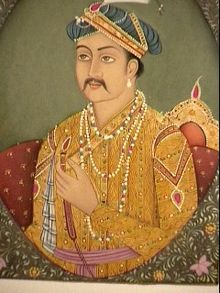
Considered as the greatest empire of the Mughal emperors, Akbar (greatest in Arabic) brought stability to his empire and an original organization. He was only 14 when he succeeded for his father. He freed himself from the regency of his tutor Bairam Khan after 4 years.
From his reign, one can retain a territorial enlargement as well as a great religious tolerance. He refuses forced conversions of all religions, bring Hindus, Muslims and Jesuits to debate religion before him. He created a religion, Din-i-Ilahi, a synthesis of the different religions that inhabit his empire at the time.
Akbar as a great builder, built Fathelpur Sikri as mughal empire’s new capital. We also owe him the strong red of Agra.
The end of his reign is marked by a war against his son Salim, the future emperor Jahangir eager to be on the throne.
Jahangir (September 9, 1569 – October 28, 1627)

During his reign, the empire remained in a state of permanent war in order to increase its territory. He had only one obsession. Conquer the central region of the Indian subcontinent, the Deccan. He found himself facing formidable adversaries like the great Malik Ambar. Because of him that he never been able to take possession of the Deccan. Jahangir even ordered a miniature representing himself piercing the severed head of Malik Ambar. The Mughals had to wait for the death of Malik Ambar to finally conquer central India.
During his reign, art, literature and architecture prospered. He was responsible for the gardens of Shalimar in Srinagar.
Shah Jahan (January 5, 1592 – January 22, 1666)
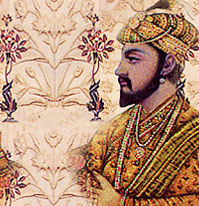
Surely the most famous Mughal emperor in the West. His love for his wife, Mumtaz Mahal, caused him to built the Taj Mahal, the most beautiful monument in the world and a symbol of the country. He also built Jama Masjid of Delhi, the largest mosque in India as well as the fort and gardens of Lahore.
During his reign the empire grows towards south, thanks to his son Aurangzeb who took Daultabad in 1633 to grow his empire.
Under Shah Jahan, Mughal architecture reached its peak. His reign is also marked by a hardening towards non-Muslims.
Unfortunately, the end of Shah Jahan’s reign is far from great. In 1658, he fell ill. His son Dara Shikoh assumed the role of regent. Aurangzeb, the other son of Shah Jahan did not feel it that way and decided to engage in a war of succession. Aurangzeb won this war against his brother and become emperor. Shah Jahan recovered from his illness and was declared incompetent by his son. He was locked in the Red Fort with one of his daughters. He spent the last 8 years of his life as a prisoner and humiliated by zealous guards, as Niccolo Manucci recounts in “a Venetian among the Mughals”.
Aurangzeb (3 November 1618 – 3 March 1707)
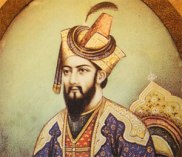
He is the last great Mughal emperor. The empire reaches its territorial apogee spanning virtually all of present-day India, Pakistan, Afghanistan, Bangladesh, and parts of northern Burma.
He turned away from the art and spends his time praying or writing Quran. Far from the pomp of his predecessors, he leads a simple life despite the wealth of the empire. When he had his capital transferred to Aurangabad, he only had simple palaces in bricks and plaster. He spent more time on the battlefield than in his palace.
He is currently the most hated character in India. The English having distorted his work. Audrey Truschke‘s book attempts to restore the reality of Aurangzeb’s reign.
When he died in 1707, he left a great empire to his children but a divided empire. From its divisions, Maratha Empire born at the same time including Sikh Empire.
The end of the Mughal empire (1707 – 1858)
Most of Mughal emperors after Aurangzeb had no greatness reigning for less than 10 years. In the year 1719, six emperors were there to reign Mughal Capital.This instability led to a territorial loss of the Mughal Empire. In the end, the Mughal Empire ruled only over Delhi. The last of the Mughal emperors, Muhammad Bahadur Shah, was sent into exile in Rangoon after his participation in the uprising of 1857.
Discover the Mughal Empire during your trip to India
Unless you travel to South India, you will inevitably have to visit one of the many monuments of the Mughal Empire. Here is a list of the main monuments to visit.
Delhi: the first capital of the empire
There has always been a great attachment of the Mughals to Delhi even when they transferred their capital to Agra.
Humayun’s tomb
It is the monument that started the beautiful construction period of the Mughals. It is also the first tomb with a garden. It became the hallmark of the Mughal Empire over the years. It was the first wife of Emperor Humayun who was origin of the project. Nine years after the death of her husband, she wanted to pay him homage. This monument also lays the foundations of Mughal architecture.
The red fort
At the end of Chandni Chowk, the Red Fort is an imposing monument. While visiting it, you will discover magnificent gardens and the view of the Yamuna, the river which borders Delhi. It was built by Shah Jahan. It is a place steeped in history and a journey through time. Do not miss it during your stay in Delhi.
Jama Masjid
No sooner did Shah Jahan finish the construction of the red fort that he ordered the construction of the Jama Masjid. It is the largest mosque in India. It can accommodate more than 25,000 people. The three domes that adorn its roof signify that this mosque was built by a Mughal emperor. Located in front of the Red Fort, it is an ideal combination to see the grandeur of the empire.
Agra: The capital of excess
The second capital of the Mughal Empire.
The Taj Mahal
Should we really talk about the Taj Mahal? The finest example of Mughal architecture. Symbol of India and love. The main building which is the tomb of Mumtaz mahal and Shah Jahan is completely in white marble inlaid with precious stones. Even if you don’t have much time during your trip, take a day trip to visit this architectural wonder.
The red fort
It was Akbar who built the red fort of Agra. Later, it became the residence of the emperors from Jahangir to Aurangzeb. From the fort, you can admire the Taj Mahal and the Yamuna river. The mixture of marble and red sandstone make this fort a delight. The other advantage is that it is located between the Taj Mahal and the Delhi train station.
Fatehpur Sikri
Akbar wanted to create his new capital. He launched the project in 1571. Akbar moved his court to his new capital but gradually abandoned it. In 1610, it was completely abandoned. Located 36.2 kilometers from Agra, it is a ghost town or let’s say no people there but peaceful that you can discover. Be careful to take water and a hat because it can get very hot there.
Aurangabad: the last capital of the Mughal Empire
Aurangabad was the capital of the Mughal Empire when it awaits its territorial apogee. One might expect to encounter gloriousness and grandeur. It’s quite the opposite. Indeed, Aurangzeb was never a great builder.
Himayat Bagh
It is the imperial garden which was attached to the citadel. This garden still has its water channels, reservoirs and some palaces. It has become the green lung of the city and locals roam there in the morning to do excercise or yoga.
Bibi ka Maqbara
Often called the Taj of the Deccan, it is the most beautiful monument of Mughal architecture in central India. Aurangzeb had it built when he was viceroy, to show his ambitions to become emperor. It is a pleasant place to spend the end of the day in the shade of this monument to the sound of birds.
The gates
Aurangabad is often called the city of gates. Many says it, that in the 17th century there were 52 gates in Aurangabad piercing the city wall. Historians rather lean on the presence of 25 doors. Even today, one can admire the imposing Delhi and Mecca gates.
Khuldabad
Located 15 kilometers from Aurangabad, the Khuldabad village has the tomb of Aurangzeb as well as the Bani Begum garden. That is the most beautiful Mughal garden in the region. The village was also the capital of Sufism in India in the 15th century and it also has many other historical monuments to visit.
There are many vestiges of the greatness of the Mughals, especially in the region of Aurangabad. You can discover them from home with our home travel program.
Please do check it out first here.

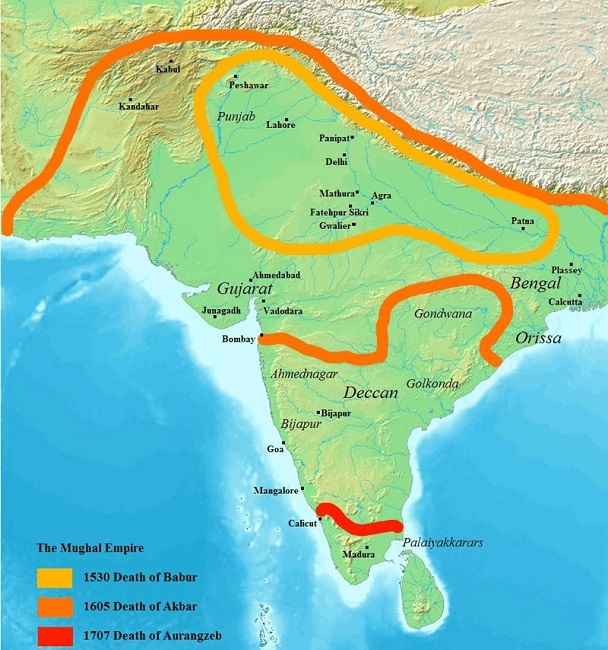
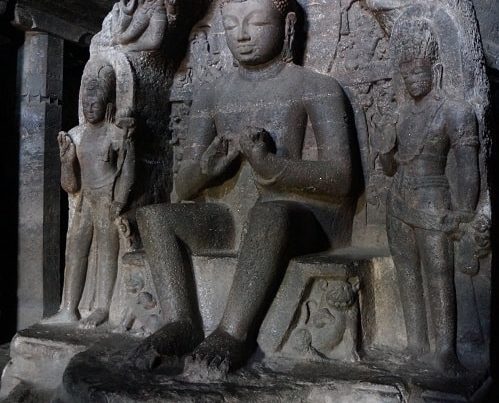
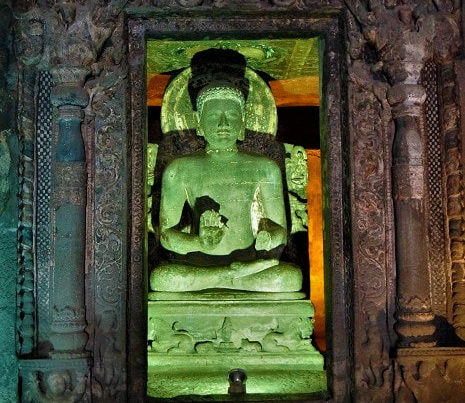
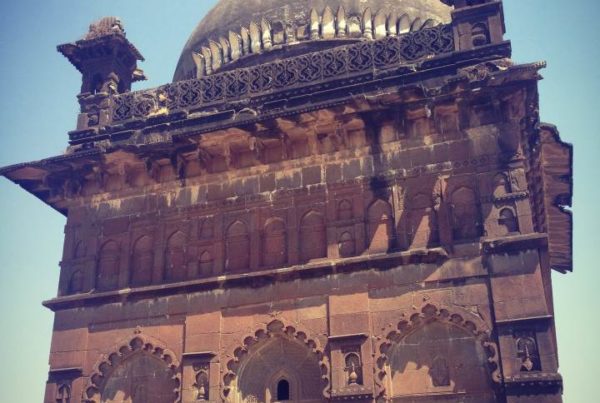
Join the discussion 4 Comments